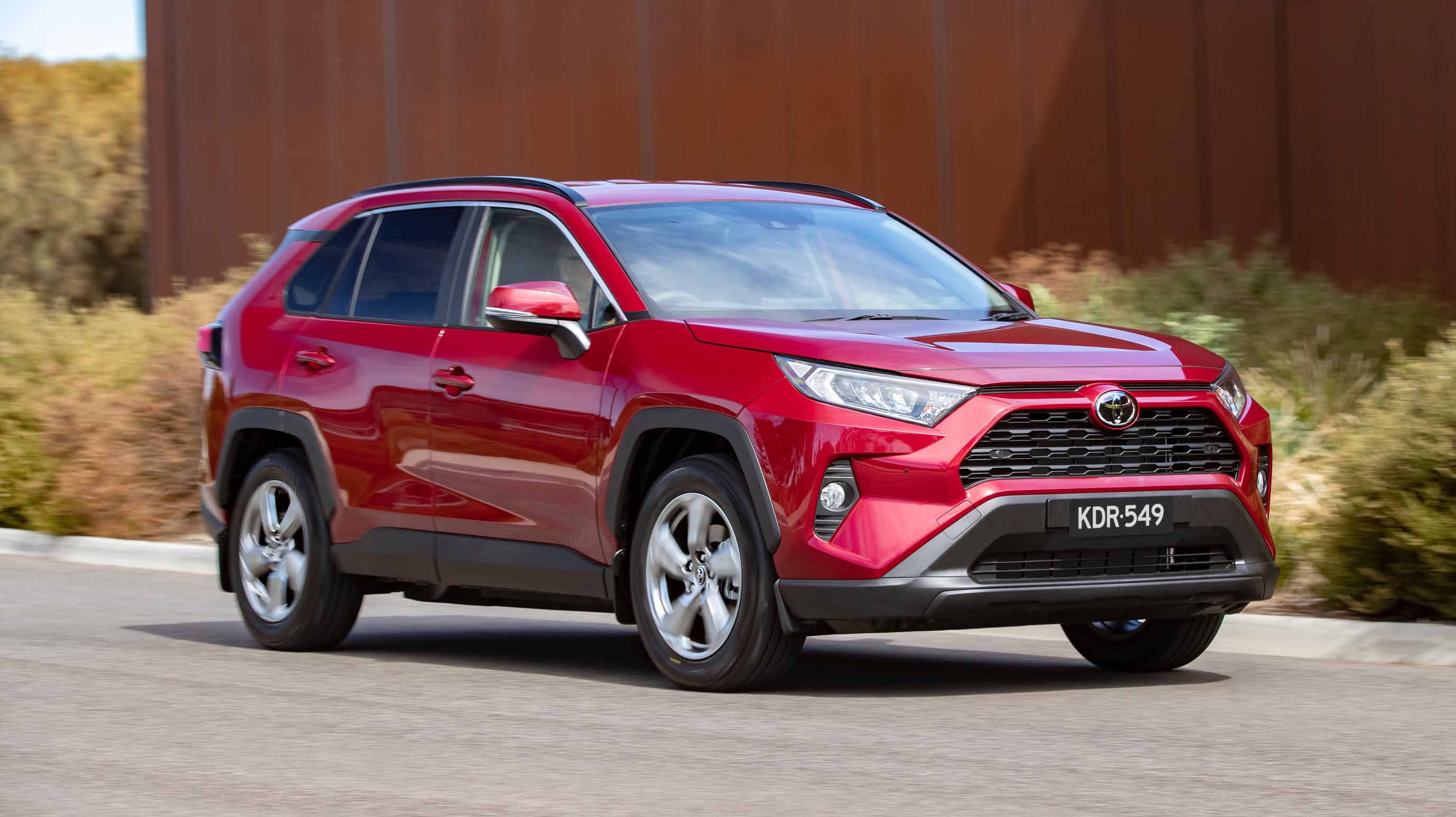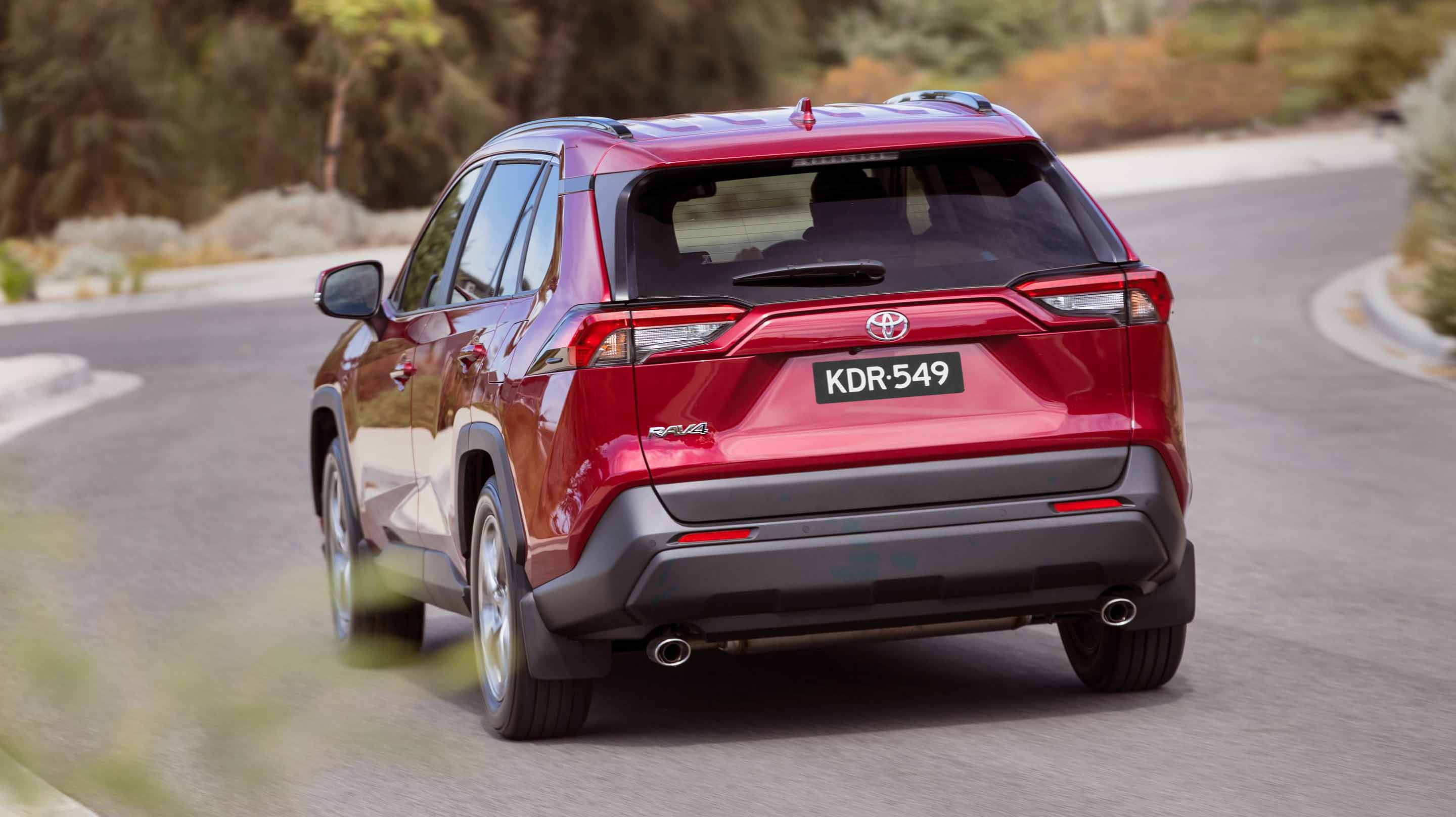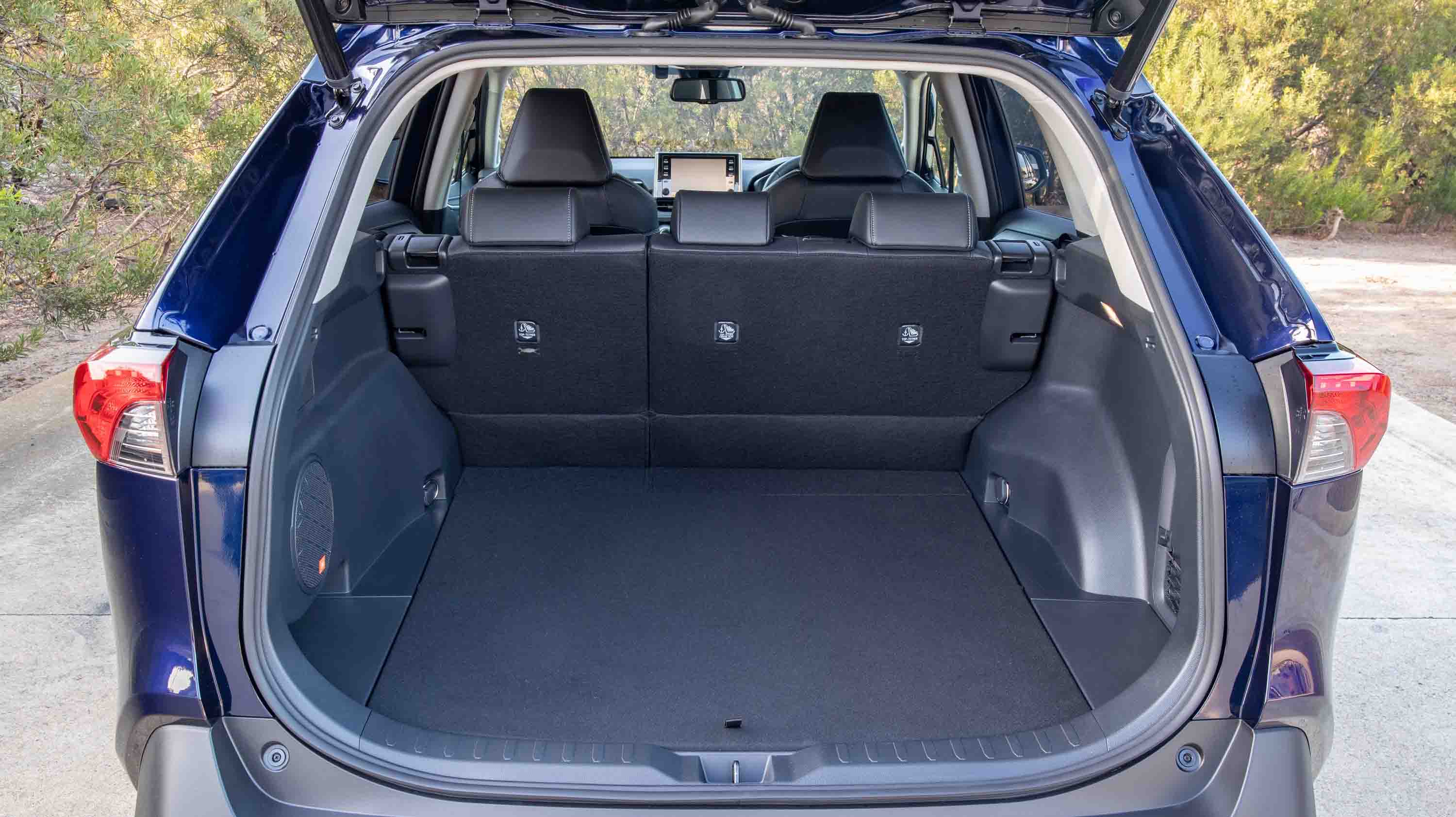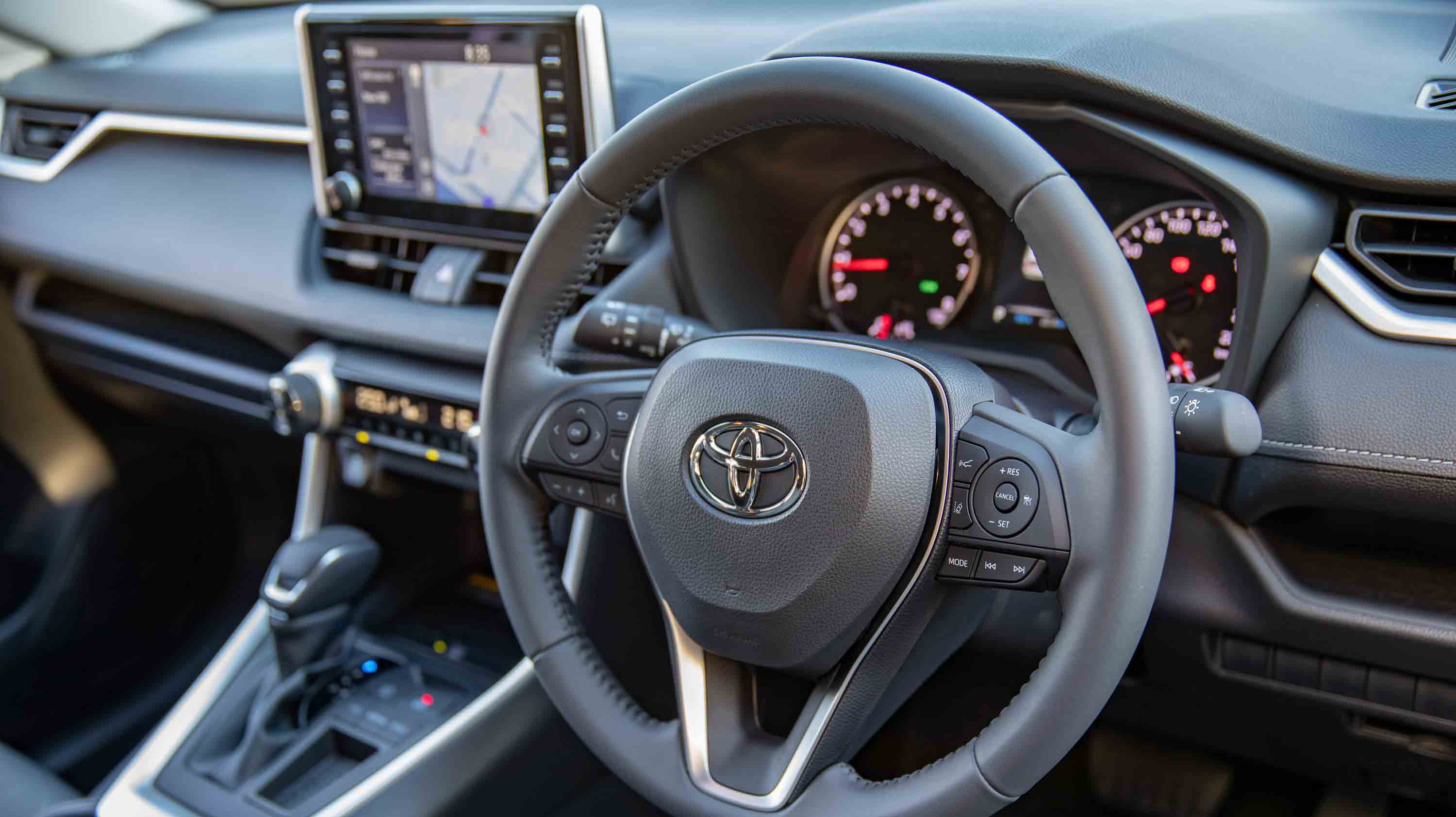We’ve teamed up with the experts at CarAdvice to bring you honest, no holds barred reviews of some of Australia’s most popular vehicles. Here’s what they had to say.
"The fifth-generation Toyota RAV4 is the safest, roomiest and most technically advanced to date – and has the option of hybrid power for the first time…"
Twenty-five years ago you could count the number of ‘soft-roaders’ on one hand. Now the market is crammed with more than two dozen choices.
Indeed, for the past two years Australians have bought more SUVs than passenger cars – and the gap is widening.
Buyers prefer the tall seating position to better see the road ahead. It’s also easier to get the little ones in and out of the back seat of an SUV. And easier for mature-age drivers to get in the front seat if their hips are knackered.

The cargo areas are generally larger and more flexible than sedans and hatches. Plus the macho looks of SUVs tell the neighbours you can escape the rat race whenever you want – even when you’re stuck in the same traffic jam as everyone else.
What we love about the all-new Toyota RAV4:
- Advanced safety tech is standard
- Roomy cabin and cargo space
- Cheap running costs
- Exterior design looks great
- Clever petrol-electric hybrid powertrain
Although there are a few shortcomings:
- Space saver spare tyre
- No rear autonomous emergency braking
- Base model only one USB port
- Lack of turbocharging hurts petrol units
- Cabin digitisation a bit low rent
In less than two decades we’ve gone from protests against SUVs on the streets of Los Angeles and Paris, to buying them in record numbers globally.
Against this backdrop Toyota has turned out a new version of its RAV4, one of the pioneers of the segment when it launched the original in 1994.
After dominating for the first decade it has faced stiff competition in recent years, and now ranks third in popularity Down Under despite posting record sales.
When car companies launch a completely new model they initially sell on looks alone and then meter out extra features over the following five or six years as the vehicle ages.
But those days are gone and most leading brands now come out swinging with a fully loaded car from the get-go.
Which is why the Toyota RAV4 is well-equipped even in its most basic guise. Toyota’s complete suite of advanced safety technology is standard on all grades.
It includes autonomous emergency braking, adaptive cruise control that maintains a gap to the car ahead, blind-spot warning, rear cross-traffic alert for shopping centre car parks, speed-sign recognition and a rear-view camera.
The safety list goes on – and a five-star rating is expected – although it lacks rear autonomous braking available on the Mazda CX-5 and Nissan X-Trail.

For the first time, the RAV4 has the option of hybrid power. Indeed, six of the 11 models in the line-up are petrol-electric versions with better economy than the now-discontinued diesel.
The new RAV4 is also the first Toyota in Australia with Apple CarPlay and Android Auto smartphone integration, although unfortunately it’s not available until late 2019. Cars delivered before then will have the technology “retro-fitted” free of charge.
For those with young families there are two ISOFIX child seat points and three top tether latches across the back seat.
The boot is among the biggest in its class (580L), and cabin roominess has improved even though it’s slightly shorter bumper-to-bumper than before.
All models – petrol or hybrid – can run on 91 regular unleaded, a rarity among new cars these days.
For all its merit, however, it’s worth noting the RRP has gone up by $1200 on certain models – and advertised drive-away prices have shot up by $3000 on some of the most popular variants.
As a quick recap, the base model Toyota RAV4 GX 2.0-litre petrol with automatic transmission has been $32,990 drive-away for the past 12 months. But the same variant in the new generation RAV4 range is priced from $32,640 plus on-road costs, which equates to approximately $35,990 drive-away.
The cheapest ticket into a RAV4 hybrid is the front-drive GX hybrid at $35,140 plus on-roads, or approximately $38,000 drive-away.
The all-wheel-drive RAV4 GX hybrid (using two electric motors to assist front and rear wheels) starts from $38,140 plus on-roads, or approximately $41,000 drive-away.
The sole petrol all-wheel-drive is the top-of-the-range Edge – with a 2.5-litre four-cylinder paired to an eight-speed auto – priced from $47,140 plus on-road costs, or a snip over $50,000 drive-away.
Service intervals are 15,000km/12 months, whichever comes first, up from 10,000km/six month intervals previously. The first five routine service visits cost $210 each, among the cheapest in the class.
Warranty coverage is five years/unlimited kilometres, industry average.
On the road

We spent most of our time on the media preview drive in the three main model grades: GX, GXL and Cruiser, available as a 2.0-litre petrol front-drive, a 2.5-litre hybrid front-drive, and a 2.5-litre hybrid all-wheel-drive.
The choice is so vast I retested them the next day after feeling lukewarm about some models and pleasantly surprised by others.
Interior

The extra cabin space and cargo area is apparent – versus its predecessors and peers. The Subaru Forester, Mazda CX-5, Ford Escape and Holden Equinox come close.
Toyota has also made a decent effort to give the cabin a lift. The dials for the infotainment screen and air-conditioning controls now have a rubber grip. If you were unkind you could say they remind you of the tyres from a model car, but they have a quality feel.
Oddment storage in the doors, centre console and glovebox is good.
Visibility all around is excellent thanks to large windows, bucking the trend of sleeker designs.
The instrument cluster has the option of a digital speedometer display, if you know how to find it.
The base model instrument cluster has a straightforward option but finding the digital readout in the higher grade models requires a flick through the owner’s manual until you can master it.
Unlike the Mazda CX-5, a head-up display that reflects speed and other key information into the windscreen in the driver’s line of sight is not available.
However, the speed sign warning system works off a camera rather than navigation data, so it can detect roadworks and school zones. In our testing it rarely misses a sign, although, as with similar systems on other brands, it also occasionally catches the 40 symbol on the back of buses.

As you might expect, with its big cushioned tyres, comfort over bumps is above average and yet it still steers with precision. It’s not always possible to get the best of both worlds.
The exception to this observation based on our preview drive is the base model hybrid which felt too firm.
In my opinion the sweet spots in the range are the 2.0-litre petrol base model GX and middle-of-the-range GXL, the two most affordable models.
They’re relatively well equipped and will suit the needs of most buyers, although the flagship Cruiser is also a smooth operator despite being fitted with lower-profile tyres.
One caveat: in the connected car age the base model GX is short-changed with a single USB port (all other RAV4 models have five). And the GX cabin would be given a lift if it gained the leather steering wheel fitted to other models.
If these seem like picky criticisms, it’s because in most regards the new RAV4 fits the brief.
These vehicles aren’t supposed to be race cars but the 2.0-litre petrol engine is perky enough for the daily commute, suburban runs, and the occasional weekend getaway.
The hybrid drivetrain is quicker and feels more refined as it moves silently from rest as it gives the petrol motor an electric boost during the thirstiest part of commuter driving.
As with other Toyota hybrids, the RAV4 tops up its battery pack when coasting or braking, so there’s no need for a power point until a plug-in hybrid is eventually offered (it’s available overseas in the Prius Prime but Toyota isn’t saying when or if it will be sold locally).
Fuel misers may prefer the hybrid option, but they’ll pay a $3000 premium for the petrol-electric tech. Which is why Toyota predicts about seven out of 10 buyers will initially opt for the conventional 2.0-litre auto.
The sporty flagship Edge, the most powerful petrol-only option in the RAV4 range, will appeal to those who crave a little more performance but it’s noisier than the other variants, both in terms of a more raucous engine and more roar from the tyres.
For now, the $50,000 Edge is the only petrol all-wheel-drive but Toyota may add a cheaper variant at a later date.
The verdict
The new Toyota RAV4 has moved with the times to appeal to modern families. In saying that, we think the new masculine design will see younger male drivers snap these up in droves.




